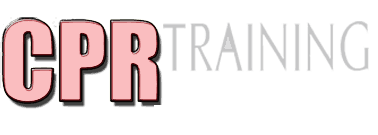Patient/ casualty handling talks about how to give proper management to an injured or sick individual should an accident or emergency take place. Patient/ casualty handling has three components: (1) emergency rescue, (2) transfer and (3) initial triage or tagging.
Patient/ Casualty Handling: Emergency Rescue
One of the components of patient/ casualty handling is emergency rescue. Emergency rescue pertains to the quick movement of patient from a dangerous place to a place of safety. Usually, it is not advised to move a patient or casualty to avoid the risk of worsening the injury or damage to the victim. However, there are several indications for emergency rescue, which include:
- There is a risk of fire or explosion.
- There is a danger of toxic gases or asphyxia due to a lack of oxygen.
- There is a risk of drowning.
- There is a risk of electrocution.
- There is a risk of the walls collapsing.
- There is serious risk of resulting to traffic hazards.
There are also several methods of rescue. If there is a need for an immediate rescue but no assistance is available nearby, opt to drag or pull the victim. Most of the one-man drags or carries and other methods of transfer can be used as rescue methods.
Patient/ Casualty Handling: Transfer
The second component of patient/ casualty handling is transfer. Transfer is the process of moving a patient or casualty from one place to another AFTER first aid has been administered. When transferring an individual, there are several factors that must be considered in the choosing of transfer method:
- Nature and severity of the injury
- Size of the individual
- First aider’s physical capabilities
- Number of staff and equipment on hand
- Nature of evacuation route
- Covered distance
- Last consideration: sex of the individual
There are several pointers that must be carried out during transfer. These are necessary to ensure the safety of the victim and to avoid complications.
- The casualty’s airway should stay open.
- If there is bleeding, it should be controlled.
- The casualty must maintain an accurate position.
- There should be regular monitoring of the condition of the casualty.
- The supporting bandages and dressing should stay in place and remain effectively applied.
- The chosen transfer method is secure, comfortable and prompt as the situation allows.
- The body of the patient is transferred as one unit.
- The head side of the casualty must be carried by taller first aiders.
- First Aiders must observe ergonomics in the carrying and transferring of the casualty.
There are several methods of transfer that can be performed when moving a casualty. However, the best one depends on which is the best fit, as according to the previously mentioned factors:
- One-man carries/ drags/ assists
Fireman’s carry is an example of one-man carries that can be used in patient/ casualty handling - Assist to walk
- Carry in arms in a cradle position
- Pack strap carry
- Piggy back carry
- Fireman’s carry
- Fireman’s drag
- Blanket drag
- Armpit/ shoulder drag
- Cloth drag
- Feet drag
- Inclined drag – where the head is first, such as when passing the stairway
- Two-man carries/ assists
- Assist to walk
- Four-hand seat
- Hands as a litter
- Carry by extremities
- Fireman’s carry with assistance
- Three-man carries
- Bearers alongside (preferred in narrow alleys)
- Hammock carry
- Four/ six/ eight-man carry
- Blanket
- Improvised stretcher using the following as two poles
- Blanket
- Empty sacks
- Shirts or coats
- Triangular bandages
- Commercial stretchers
- Ambulance or rescue van
- Other vehicles
Patient/ Casualty Handling: Initial Triage or Tagging
The third component in patient/ casualty handling is the initial triage or tagging. Triage pertains to the sorting of patients in priority categories for care and transport. The category is based on how severe the injuries are and if they are considered medical emergencies. Patient tags are as follows:
- Priority 1 (RED tag): life-threatening conditions; considered the worst (requires immediate transfer)
- Priority 2 (YELLOW tag): can wait for up to an hour
- Priority 3 (GREEN tag): wounded but can walk
- Priority 4 (BLACK tag): dead
Learn how to properly handle patients or casualties by enrolling in First Aid Courses and CPR Classes.
Patient/ casualty handling involves three components: emergency rescue (indications), transfer (factors and methods) and initial triage or tagging.

